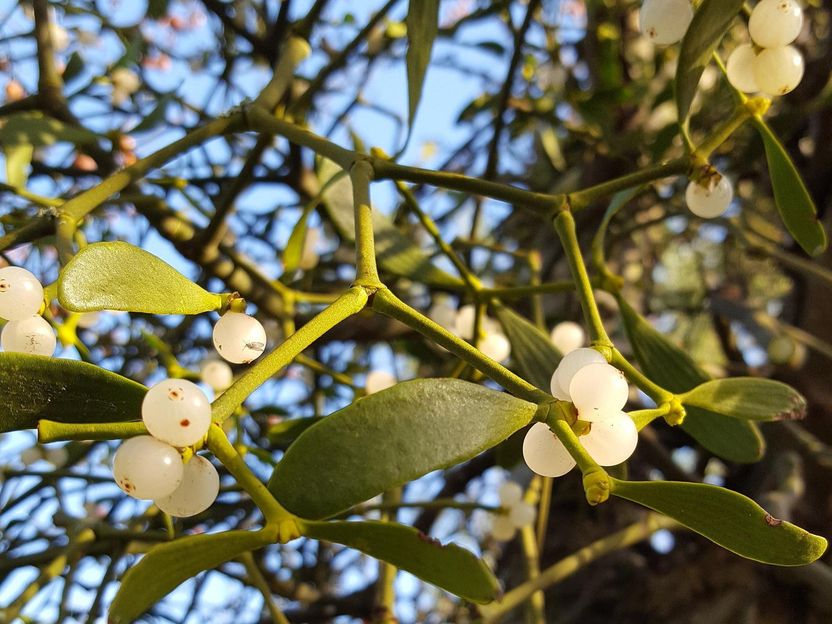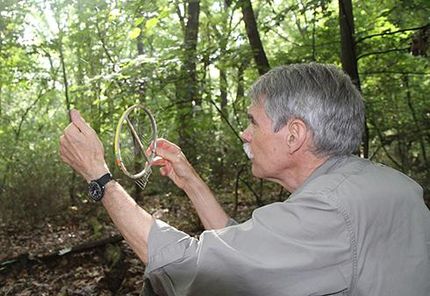Natural super glue from mistletoe berries
A promising discovery
A team of researchers from the Max Planck Institute of Colloids and Interfaces (MPICI) and McGill University in Canada discovered strong adhesive properties of white-berry mistletoe. The mistletoe berry's flexible fibers adhere to both skin and cartilage as well as to various synthetic materials and could find application in many fields, such as wound sealant in biomedicine, through ease of processing.

Close up of mistletoe berries containing sticky seeds
pixabay.com
For their research, the materials scientists led by Prof. Dr. Peter Fratzl picked the mistletoe berries from the trees themselves. From his office window, the director of the Department of Biomaterials can see the many green parasitic plants. "Mistletoe grows in large numbers everywhere, including the Max Planck Campus, and is biodegradable and renewable," says Peter Fratzl, adding, "For the first time, we are now investigating how to harness its excellent adhesive properties for potentially medical or technical uses."
Advantages of the biological glue: it adheres very well and is easy to remove under humid conditions.
To observe the adhesive properties, materials scientist and former carpenter Dr. Nils Horbelt wore the mistletoe glue on his fingers for three days in a self-experiment: "Afterwards, I was able to remove the viscin by simply rubbing my fingers together." Each mistletoe berry can produce a sticky thread up to two meters long called viscin - a natural cellulose adhesive. This allows the seeds of the semi-parasitic plant to stick to their host plants. The researchers in the former research group of Dr. Matthew Harrington, who has since moved on to a professorship at McGill University in Canada, discovered that viscin fibers can be stretched into thin films or assembled into 3D structures by simply processing them when wet. This natural super glue could potentially find application as a wound sealant, and it also adheres to metals, glass and plastics. Also exciting is the fact that the adhesive properties are fully reversible under humid conditions. "Many questions remain about this very unusual material," says Nils Horbelt, first author of the present study. The next step will now be to investigate the chemistry behind this swellable, extremely sticky material in order to be able to imitate the bonding process in a second step.
Original publication
Other news from the department science

Get the life science industry in your inbox
By submitting this form you agree that LUMITOS AG will send you the newsletter(s) selected above by email. Your data will not be passed on to third parties. Your data will be stored and processed in accordance with our data protection regulations. LUMITOS may contact you by email for the purpose of advertising or market and opinion surveys. You can revoke your consent at any time without giving reasons to LUMITOS AG, Ernst-Augustin-Str. 2, 12489 Berlin, Germany or by e-mail at revoke@lumitos.com with effect for the future. In addition, each email contains a link to unsubscribe from the corresponding newsletter.


















































